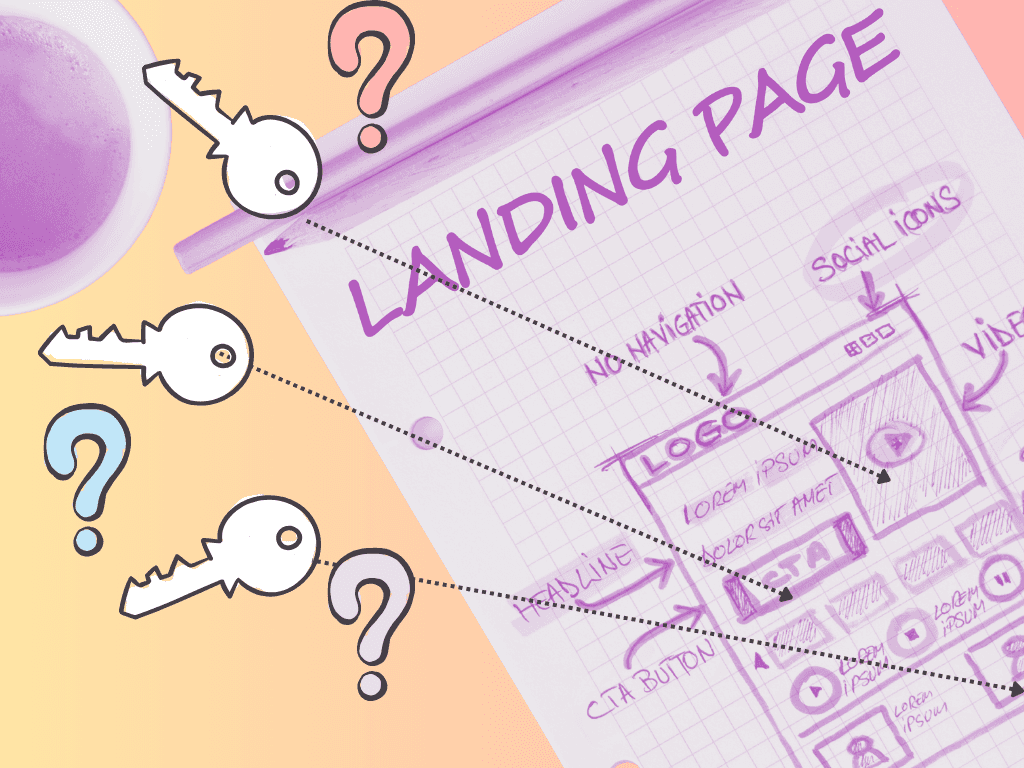


Planning Digital Products
4 Strategies to Perfectly Price Your Digital Product
4 Strategies to Perfectly Price Your Digital Product
4 Strategies to Perfectly Price Your Digital Product
by
Caroline Zook
The sweet spot of pricing a digital product can mean the difference between a successful online business and one that gathers virtual dust.
Establishing a price that reflects the value, satisfies your audience, and positions you competitively doesn't require any special skills or experience.
A great pricing strategy helps support a great product and in this article we're going to break down four powerful strategies to help skyrocket your digital product sales!
Understanding Production Cost in Pricing Your Digital Product
Understanding the production cost is a fundamental step in pricing your digital product effectively.
Digital products often have very low production costs, but the initial creation can be resource-intensive. Considering aspects like development time, software used, outsourcing expenses, and expertise involved is crucial.
These costs can fluctuate based on the complexity of the product and the tools required to create it.
Calculating the Cost to Produce Your Digital Product
Calculating the cost involves accumulating all relevant expenses and dividing them by the expected units sold.
Start with a spreadsheet to log all costs associated with production, including technical tool subscriptions, third-party services, and website maintenance. Divide the total by an estimated unit sale to get the cost per unit. This number is your baseline that any pricing strategy should exceed to ensure profitability.
Applying a Markup for Profit Margin
Once the cost per unit is determined, applying a markup sets the final price and ensures a profit margin. The markup percentage varies depending on your target audience, product uniqueness, and market competition.
Consider the perceived value of the product to the customer and how it compares to competitor pricing. This value-based pricing model considers the benefits your product provides.
Examples of Markup Strategies for Digital Products
Markup strategies include tiered pricing, where multiple price points attract a wider range of customers.
For example, an online course could have basic ($100), intermediate ($300), and premium pricing tiers ($1000). Each pricing option would include different assets. The basic option could just be the course, the intermediate could include digital downloads, and the premium option could include 1-on-1 coaching.
Use tiered pricing is a great way to increase profit margins drastically over initial production costs.
Positioning Your Digital Product in the Market
Positioning your digital product effectively attracts the right audience and distinguishes you from competitors. It involves establishing the identity and value of your product in the eyes of your potential customers. By defining what your product stands for, you align it with customer expectations.
How to Determine Your Market Position
To determine your market position you want to analyze competitor pricing, understand the needs of your target audience, and identify market gaps. Key factors to consider include:
Target Audience: Who are your potential customers? What are their preferences and expectations?
Competitor Analysis: What are similar businesses offering? At what price points?
Unique Selling Points: What makes your product distinct?
Market Trends: What is the current market direction?
Strategies for Effective Product Positioning
Effective product positioning requires a multifaceted strategy:
Clear Messaging: Define a clear and compelling message that communicates the value of your product.
Brand Consistency: Ensure all marketing materials reflect your brand's voice.
Customer Feedback: Use feedback to refine your product's position continually.
Utilization of Channels: Determine the most effective marketing channels for reaching your audience, such as social media, SEO, or email marketing.
Impact of Positioning on Pricing Digital Products
Your product's market position directly affects its pricing. A premium product might justify a higher price, while a value-oriented product may need competitive pricing. Consider the following:
Perceived Value: How customers perceive your product influences their willingness to pay a premium.
Competition: Positioning your product as superior may allow for higher pricing.
Quality and Exclusivity: High-quality content and exclusivity can lead to a higher pricing threshold.
Customer Loyalty: Well-positioned products can foster loyalty, making customers more accepting of price increases.
Examples of Pricing by Positioning:
Let's look at three pricing options for someone selling digital downloads:
Luxury Position (High Price, High Value) = $1,000
Value Position (High Value, Low Price) = $200
Economy Position (Low Value, Low Price) = $20
Depending on the income level of your target customer, additional features you offer, and the exclusive access you might add on with your product, you can decide which base price is best for your business goals.
Using Peer Pricing to Set Your Digital Product Price
Peer pricing (or competitor-based pricing) involves evaluating the price points of similar products within your niche. Understanding market rates helps you competitively price your offerings. While peer pricing provides a baseline, your unique value proposition should also influence pricing.
Analyzing Competitor Pricing
To use peer pricing effectively, analyze competitor pricing. Review the cost of digital downloads, online courses, and similar products.
Create a table comparing features, benefits, price points, and any tiered pricing structures competitors use. This helps you identify the market average and understand the price range.
Setting Competitive Prices for Your Digital Product
With competitor pricing data, set competitive prices for your product. A competitive strategy might mean setting your price slightly lower than the market average to attract customers or positioning your product at a premium price if it provides superior value. Consider your production costs and desired profit margin to ensure sustainability.
Adjusting Prices Based on Peer Analysis
Peer analysis is ongoing and can lead to periodic price adjustments. Monitor market trends, competitor changes, and customer feedback regularly. Adjust your pricing to stay competitive and meet your business goals. If a competitor releases a new feature that justifies a higher price, consider how your product compares and if a feature update or pricing adjustment is needed.
Considering Payoff When Pricing Your Digital Product
This one is a pretty straightforward approach to pricing. If your digital product can create a direct financial return (ROI) for your customer, you can create a pricing sweet spot that makes it a no-brainer purchase.
Understanding the ROI of Your Digital Product
Grasping ROI involves looking at immediate revenue earned and the broader impact for your customer. Here's an example for a digital product business selling a software subscription:
What does the software do? The software helps a business owner grow their email list through automated cold email outreach campaigns.
How much is a new email lead worth? On average, a new email lead is worth $5.
How is it sold? With a monthly subscription pricing model.
What is a fair price for the software? Given the ROI, if the software can generate one new email lead per day ($5*30 = $150 in value per month), the ideal price would be in the $30-$50 per month range.
Knowing the answers to these questions for your product will create an optimal price that your ideal customer would be happy to spend.
Pricing Based on Value and Payoff
A value-based pricing model sets your product's price based on its perceived value to customers. This strategy can increase profit margins by tapping into the customer's willingness to pay for the payoff they anticipate. Consider these steps:
Identify Benefits: Main benefits of your product and how they translate into value.
Research: How much customers are willing to pay for similar benefits.
Set Pricing Tiers: Different levels of investment and payoff.
A tiered pricing structure offers various levels of value and corresponding payoff to accommodate a wider range of customers at multiple price options.
Communicating Value to Justify Pricing
Effectively communicating your product's value justifies its price. Your marketing strategy must clearly articulate the payoff your customers will receive by purchasing an online course, digital downloads, software subscription products, memberships, etc.
When displaying a reasonable price for your digital product, remember to always share these things with your customers:
Testimonials and Case Studies: Share success stories from satisfied customers.
Transparent Breakdowns: Use visuals to compare the cost of your product with the benefits over time.
Easy Comparisons: Compare your product's cost versus potential cost savings or earnings.
Market Demand: Display charts or trendlines that illustrate the interest level in your niche.
All of these factors will help you choose the right price for your potential customers.
The sweet spot of pricing a digital product can mean the difference between a successful online business and one that gathers virtual dust.
Establishing a price that reflects the value, satisfies your audience, and positions you competitively doesn't require any special skills or experience.
A great pricing strategy helps support a great product and in this article we're going to break down four powerful strategies to help skyrocket your digital product sales!
Understanding Production Cost in Pricing Your Digital Product
Understanding the production cost is a fundamental step in pricing your digital product effectively.
Digital products often have very low production costs, but the initial creation can be resource-intensive. Considering aspects like development time, software used, outsourcing expenses, and expertise involved is crucial.
These costs can fluctuate based on the complexity of the product and the tools required to create it.
Calculating the Cost to Produce Your Digital Product
Calculating the cost involves accumulating all relevant expenses and dividing them by the expected units sold.
Start with a spreadsheet to log all costs associated with production, including technical tool subscriptions, third-party services, and website maintenance. Divide the total by an estimated unit sale to get the cost per unit. This number is your baseline that any pricing strategy should exceed to ensure profitability.
Applying a Markup for Profit Margin
Once the cost per unit is determined, applying a markup sets the final price and ensures a profit margin. The markup percentage varies depending on your target audience, product uniqueness, and market competition.
Consider the perceived value of the product to the customer and how it compares to competitor pricing. This value-based pricing model considers the benefits your product provides.
Examples of Markup Strategies for Digital Products
Markup strategies include tiered pricing, where multiple price points attract a wider range of customers.
For example, an online course could have basic ($100), intermediate ($300), and premium pricing tiers ($1000). Each pricing option would include different assets. The basic option could just be the course, the intermediate could include digital downloads, and the premium option could include 1-on-1 coaching.
Use tiered pricing is a great way to increase profit margins drastically over initial production costs.
Positioning Your Digital Product in the Market
Positioning your digital product effectively attracts the right audience and distinguishes you from competitors. It involves establishing the identity and value of your product in the eyes of your potential customers. By defining what your product stands for, you align it with customer expectations.
How to Determine Your Market Position
To determine your market position you want to analyze competitor pricing, understand the needs of your target audience, and identify market gaps. Key factors to consider include:
Target Audience: Who are your potential customers? What are their preferences and expectations?
Competitor Analysis: What are similar businesses offering? At what price points?
Unique Selling Points: What makes your product distinct?
Market Trends: What is the current market direction?
Strategies for Effective Product Positioning
Effective product positioning requires a multifaceted strategy:
Clear Messaging: Define a clear and compelling message that communicates the value of your product.
Brand Consistency: Ensure all marketing materials reflect your brand's voice.
Customer Feedback: Use feedback to refine your product's position continually.
Utilization of Channels: Determine the most effective marketing channels for reaching your audience, such as social media, SEO, or email marketing.
Impact of Positioning on Pricing Digital Products
Your product's market position directly affects its pricing. A premium product might justify a higher price, while a value-oriented product may need competitive pricing. Consider the following:
Perceived Value: How customers perceive your product influences their willingness to pay a premium.
Competition: Positioning your product as superior may allow for higher pricing.
Quality and Exclusivity: High-quality content and exclusivity can lead to a higher pricing threshold.
Customer Loyalty: Well-positioned products can foster loyalty, making customers more accepting of price increases.
Examples of Pricing by Positioning:
Let's look at three pricing options for someone selling digital downloads:
Luxury Position (High Price, High Value) = $1,000
Value Position (High Value, Low Price) = $200
Economy Position (Low Value, Low Price) = $20
Depending on the income level of your target customer, additional features you offer, and the exclusive access you might add on with your product, you can decide which base price is best for your business goals.
Using Peer Pricing to Set Your Digital Product Price
Peer pricing (or competitor-based pricing) involves evaluating the price points of similar products within your niche. Understanding market rates helps you competitively price your offerings. While peer pricing provides a baseline, your unique value proposition should also influence pricing.
Analyzing Competitor Pricing
To use peer pricing effectively, analyze competitor pricing. Review the cost of digital downloads, online courses, and similar products.
Create a table comparing features, benefits, price points, and any tiered pricing structures competitors use. This helps you identify the market average and understand the price range.
Setting Competitive Prices for Your Digital Product
With competitor pricing data, set competitive prices for your product. A competitive strategy might mean setting your price slightly lower than the market average to attract customers or positioning your product at a premium price if it provides superior value. Consider your production costs and desired profit margin to ensure sustainability.
Adjusting Prices Based on Peer Analysis
Peer analysis is ongoing and can lead to periodic price adjustments. Monitor market trends, competitor changes, and customer feedback regularly. Adjust your pricing to stay competitive and meet your business goals. If a competitor releases a new feature that justifies a higher price, consider how your product compares and if a feature update or pricing adjustment is needed.
Considering Payoff When Pricing Your Digital Product
This one is a pretty straightforward approach to pricing. If your digital product can create a direct financial return (ROI) for your customer, you can create a pricing sweet spot that makes it a no-brainer purchase.
Understanding the ROI of Your Digital Product
Grasping ROI involves looking at immediate revenue earned and the broader impact for your customer. Here's an example for a digital product business selling a software subscription:
What does the software do? The software helps a business owner grow their email list through automated cold email outreach campaigns.
How much is a new email lead worth? On average, a new email lead is worth $5.
How is it sold? With a monthly subscription pricing model.
What is a fair price for the software? Given the ROI, if the software can generate one new email lead per day ($5*30 = $150 in value per month), the ideal price would be in the $30-$50 per month range.
Knowing the answers to these questions for your product will create an optimal price that your ideal customer would be happy to spend.
Pricing Based on Value and Payoff
A value-based pricing model sets your product's price based on its perceived value to customers. This strategy can increase profit margins by tapping into the customer's willingness to pay for the payoff they anticipate. Consider these steps:
Identify Benefits: Main benefits of your product and how they translate into value.
Research: How much customers are willing to pay for similar benefits.
Set Pricing Tiers: Different levels of investment and payoff.
A tiered pricing structure offers various levels of value and corresponding payoff to accommodate a wider range of customers at multiple price options.
Communicating Value to Justify Pricing
Effectively communicating your product's value justifies its price. Your marketing strategy must clearly articulate the payoff your customers will receive by purchasing an online course, digital downloads, software subscription products, memberships, etc.
When displaying a reasonable price for your digital product, remember to always share these things with your customers:
Testimonials and Case Studies: Share success stories from satisfied customers.
Transparent Breakdowns: Use visuals to compare the cost of your product with the benefits over time.
Easy Comparisons: Compare your product's cost versus potential cost savings or earnings.
Market Demand: Display charts or trendlines that illustrate the interest level in your niche.
All of these factors will help you choose the right price for your potential customers.
Related reading:
Table of Contents
Read Next

Say Goodbye to Subscription Fatigue and Hello to Teachery's Lifetime Deal
Product Updates

Say Goodbye to Subscription Fatigue and Hello to Teachery's Lifetime Deal
Product Updates

Say Goodbye to Subscription Fatigue and Hello to Teachery's Lifetime Deal
Product Updates

The Ultimate Sales Page Formula To Sell Your Digital Product (With Examples)
Planning Digital Products

The Ultimate Sales Page Formula To Sell Your Digital Product (With Examples)
Planning Digital Products

The Ultimate Sales Page Formula To Sell Your Digital Product (With Examples)
Planning Digital Products
Get started with Teachery
Unlimited products
Unlimited students
No added transaction fees
© 2013 - Present | Teachery Inc. All rights reserved.
© 2013 - Present | Teachery Inc.
All rights reserved.
© 2013 - Present | Teachery Inc. All rights reserved.
